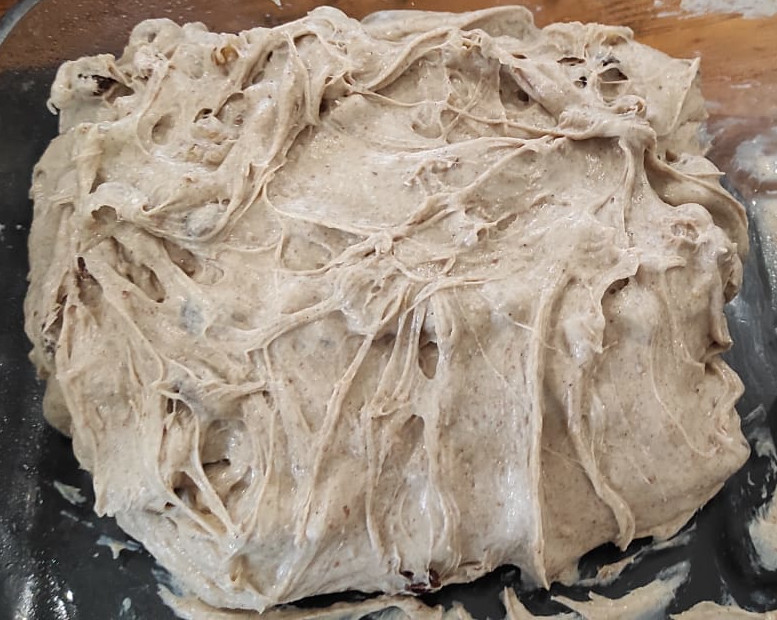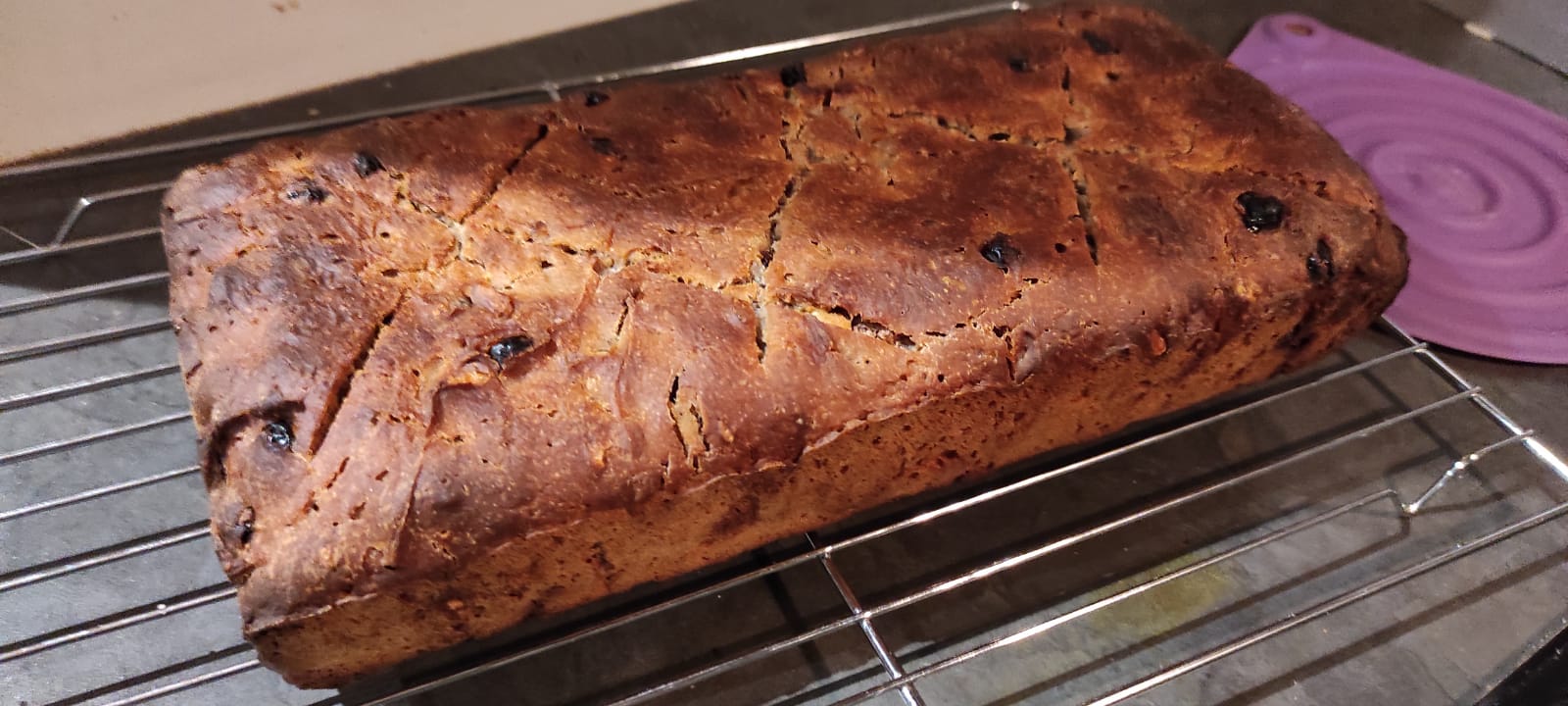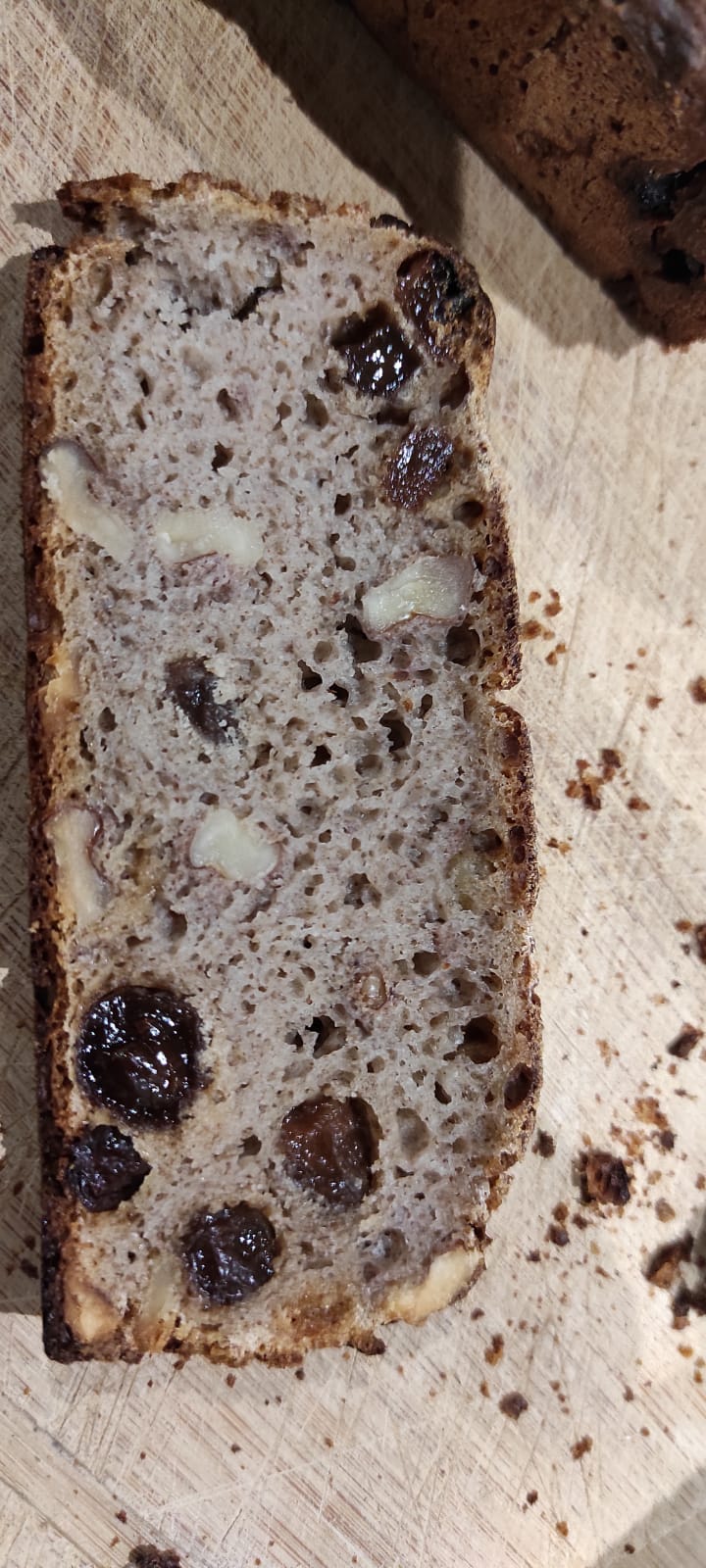Weet-bix (in South Africa and Australia, or Weetabix in the UK, apparently available in the US too...) is a breakfast cereal of 'biscuits' of wholegrain wheat biscuits. The usual way we eat it in my family is with a sprinkle of sugar on top and then allow it to soak up the milk. It can really soak up the milk. It's quite a comfort food, and would be a great way to increase dietary fibre and be fairly healthy too (if it wasn't for the aforementioned sugar).
Because of the comfort food thing, thought it might be great in bread. I know it is used in biscuit and rusk recipes here. I found this recipe from Australia for a bread made with self-raising flour which gave me some ideas how to create a sourdough bread recipe.
That recipe allowed the weet-bix to soak up the milk overnight and then used that in the dough the next day, so I followed along with the idea making an overnight soaker with some sugar and the raisins too. The soaker had already soaked up all the milk even before it went into the fridge. If I was to rework the recipe I'd use the dry biscuits in the initial dough mix instead. The problem with adding an ingredient that soaks up moisture is similar to the oat porridge recipes, you end up crafting a recipe with a high nominal hydration, or the final dough is of such a low hydration to compensate for the wet soaker that will be eventually added that it is pretty stiff and it is difficult to combine the components together.

This is what happened here, my final dough was pretty stiff, even after it was mixed with the levain. The Weet-bix soaker was added to that and my poor mixer struggled to combine with the stiff dough. I had made a yeast water preferment to act as insurance in case I needed it, so that was also included to try and loosen up the dough mixture.The raisins, walnuts and cinnamon were added at the end to the mixer. Mixed for a total of 20 minutes.
The resultant dough had a horrid texture, unlike anything I've ever worked with before. From the mixer it went into a Pyrex dish in the proofer, but trying to coil fold it was a nightmare. There was lots of gluten visible, sheeting of the dough, but trying to lift and stretch it didn't work - it was more like working with a rye dough that fails to 'stretch' or show cohesiveness. Someone who was visiting called it a primordial gloop bread.

In a moment of temporary insanity of struggling with the gloop I threw it into the large loaf pan (a 30cm Zenker) which was a mistake as the pan was too large, so I ended up with a flat bread. It was baked for 60 minutes in the pan at 200°C(392°F), covered for the first 20 minutes with foil.

The bread itself is really interesting. In some ways it is like a giant Weet-bix. The crust crackles when you bite it, and the texture of the interior is a little like a creamy weet-bix biscuit that has been allowed to soak up all the milk. Being flat isn't such a bad thing, as it has given me more crust per slice. I do like eating the bread, but on the other hand a whole loaf of it may be a bit much so most of the loaf has now been sliced and frozen. I'll have toast made with it when I need a comfort food snack.

-Jon